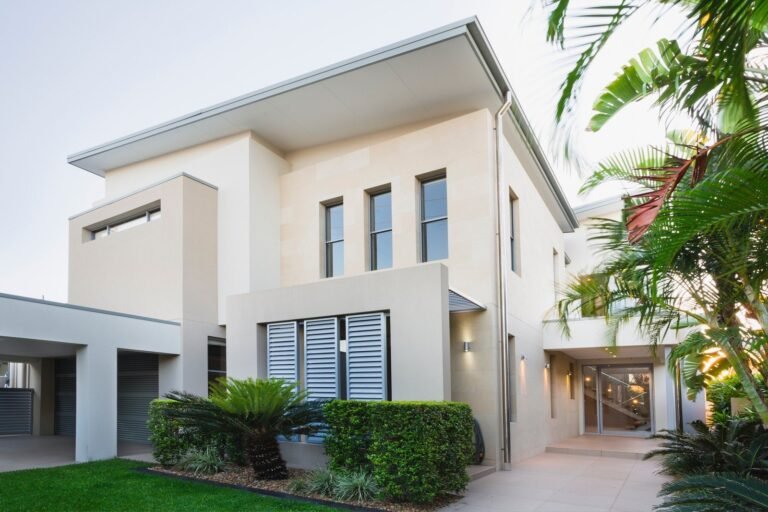Creating an outdoor living space is one of the best ways to enhance the appeal and functionality of your home. Whether you’re looking to host family gatherings, enjoy a quiet evening under the stars, or just add value to your property, a well-designed outdoor living space can be a perfect solution.
An outdoor living space offers a variety of opportunities to enjoy nature while still having the comfort of your home. But how exactly do you create such a space? In this article, we’ll guide you step by step on how to build a beautiful and functional outdoor living area.
Why Build an Outdoor Living Space?
Outdoor living spaces have become increasingly popular in recent years, and for good reason. They offer a seamless connection to nature while allowing you to enjoy modern comforts. Here’s why building an outdoor living space is worth the investment:
- Increased Property Value: An outdoor living area can raise the resale value of your home.
- More Usable Space: It expands your living area and allows you to entertain guests, relax, and enjoy outdoor activities.
- Enhanced Aesthetic Appeal: A thoughtfully designed outdoor space can improve the overall look of your property.
- Quality Time: It provides a comfortable environment for family gatherings, barbecues, or quiet time alone.
- Health Benefits: Spending time outdoors can reduce stress, improve mental health, and increase physical activity.
Steps to Build an Outdoor Living Space
Building an outdoor living space requires careful planning, consideration of available space, and a thoughtful design. Let’s break down the process.
1. Define Your Purpose
Before you start planning, think about how you want to use the space. Do you want it for:
- Relaxation (a peaceful retreat to enjoy nature)
- Entertaining (a space for gatherings, barbecues, or parties)
- Outdoor Dining (a place to have meals outdoors)
- Active Space (a zone for games or hobbies)
Defining the purpose of the space will guide your design decisions and help you create a functional and enjoyable outdoor environment.
2. Assess Your Space
Take a good look at your available outdoor area. Consider the following:
- Size and Shape: What is the available space? Is it large enough to accommodate seating, a dining area, or a fire pit?
- Sunlight and Shade: Understand how much sunlight your space gets at different times of the day. This will help in choosing the right furniture and plants.
- View and Privacy: Does your outdoor space have a beautiful view or is it near a noisy street? You may need to add privacy screens or strategically place plants to create a more private retreat.
- Terrain: Check if the ground is level or sloped. Uneven surfaces may require additional preparation like leveling the ground or adding decking.
3. Choose the Right Flooring
The flooring or ground surface is an important part of any outdoor living area. It needs to be durable and complement the overall design. Some common outdoor flooring options include:
- Wood Decking: A classic choice for outdoor spaces, providing a warm and natural look.
- Concrete: Concrete is versatile and can be stamped or stained to create a variety of looks.
- Pavers: Stone or brick pavers give an elegant touch and can be arranged in various patterns.
- Gravel: An affordable and low-maintenance option, gravel is great for pathways and informal spaces.
- Outdoor Rugs: If you’re looking for something less permanent, outdoor rugs can add comfort and style to a patio or deck.
4. Select Furniture and Seating
Furniture is essential in creating a comfortable outdoor living space. Depending on your space’s function, you can choose from various options:
- Lounge Seating: Comfortable seating such as outdoor sofas, chairs, and hammocks is perfect for relaxation.
- Dining Furniture: If you want to dine outdoors, consider getting a durable dining table and chairs made of weather-resistant materials like metal, teak, or resin.
- Modular Furniture: Modular seating can be a great choice for flexibility, allowing you to move pieces around to suit different activities or gatherings.

5. Add Shade and Shelter
Outdoor spaces can get hot under the direct sun, so it’s essential to incorporate shade and shelter elements to make the space more comfortable:
- Pergolas: A pergola is an open-roof structure that can provide partial shade while still allowing some sunlight to come through. It can also serve as a decorative feature.
- Gazebos: A gazebo offers full coverage and protection from the elements, making it ideal for dining or relaxing.
- Umbrellas: Large patio umbrellas are perfect for smaller outdoor spaces and provide adjustable coverage.
- Shade Sails: Modern and stylish, shade sails can be installed to provide effective sun protection.
6. Install Lighting
Lighting can completely transform an outdoor space, making it more inviting and usable in the evenings. Some lighting options include:
- String Lights: Create a whimsical and cozy atmosphere with outdoor string lights draped over furniture or pergolas.
- Path Lights: Install pathway lights to illuminate walkways and guide guests around your space.
- Lanterns: Lantern-style lights are portable and add a charming touch.
- Floodlights: If you need more illumination, floodlights can be used to light up larger areas or features such as trees or a fire pit.
7. Incorporate Greenery and Landscaping
To make your outdoor living space feel connected to nature, landscaping is key. Here are some ideas:
- Potted Plants: Use planters to add greenery without requiring much space.
- Climbing Plants: Add vertical greenery like ivy or climbing roses to walls or trellises.
- Trees and Shrubs: If space allows, planting trees can provide shade and privacy.
- Garden Beds: Create a small garden with flowers, herbs, or vegetables to add color and functionality.
8. Add Functional Elements
Your outdoor living space can also include functional elements that enhance its usability:
- Fire Pit: A fire pit adds warmth and creates a cozy, inviting atmosphere. It’s also great for social gatherings.
- Water Features: A small fountain or pond can add tranquility to your space with the soothing sound of running water.
- Outdoor Kitchen: If you enjoy cooking outside, consider adding an outdoor kitchen complete with a grill, countertop space, and storage.
- Outdoor Bar: A bar area with stools and a countertop can make your outdoor space perfect for entertaining.
Conclusion
Building an outdoor living space is a fantastic way to increase the functionality, comfort, and beauty of your home. Whether you want a relaxing retreat, a space for entertaining, or a functional outdoor area, planning is key to creating a space that meets your needs and suits your lifestyle.









